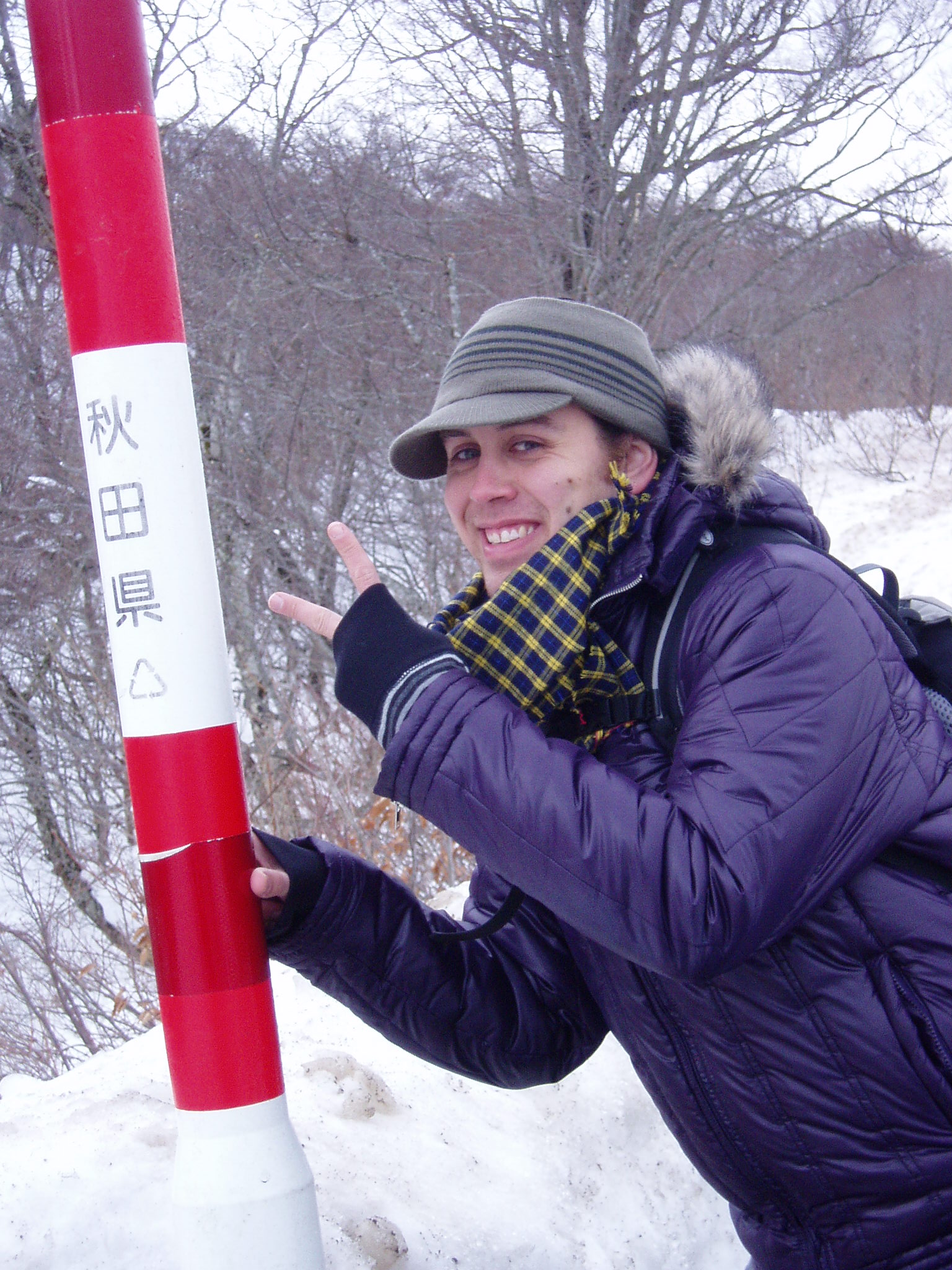Kyodo News “JET Alumni” Series: Dominic Abordo (Akita)
News agency Kyodo News has recently been publishing monthly articles written by JET alumni who were appointed in rural areas of Japan, as part of promotion for the JET Programme. Below is the English version of the column from February 2014. Posted by Celine Castex (Chiba-ken, 2006-11), currently programme coordinator at CLAIR Tokyo.
********
Originally from San Francisco, CA, Dominic Abordo (Akita-ken, Kosaka-machi, 2008-11) holds a Bachelors Degree in English Literature with a minor in East Asian Languages from Berkeley University. He spent three years working as a Coordinator for International Relations (CIR) in rural Akita before enrolling in a Master’s degree in Social Work from Columbia University, NY. He currently works as a Freelance Consultant in Social Work in New York.
A “Big City Boy” in Snow Country

“The one thing that I will continue to share with my friends and family is that the people of the small town of Kosaka-machi have some of the biggest hearts in the world.”
Akita (əˈkiːtə), noun: 1. one of the northernmost prefectures on the Japanese island of Honshu; 2. the prefecture that I, Dominic Abordo, called “home” for three years.
If you ask the average American about Japan, it is highly unlikely that Akita Prefecture – a gem of the Tohoku Region famous for heavy snowfall, rice, kiritanpo, and sinister mountain demons called namahage – will be included in his or her response. Despite living in Japan for three years prior to the JET Programme, I, too, knew very little about my future home. Thus, I was admittedly nervous when I first arrived in Kosaka-machi, a small town of approximately 6,500 people located in the northeastern corner of Akita. I assumed that my time as a Coordinator for International Relations (CIR) would be full of new adventures, challenges, and opportunities, but I had no idea that the experience would have such a positive and lasting impact on my future.
Although it took almost one year to master the local dialect, Kosaka-machi soon became a second home to me. The natives were eager to introduce me to the natural beauty and hidden treasures of their hometown, including landmarks such as Nanataki Waterfall, Lake Towada, and the Korakukan kabuki theater. They often accompanied me to the best restaurants, bars, and izakaya in the area, sharing personal stories about their families, jobs, and travel experiences over a meal or a few drinks. Elementary school students and adults alike offered warm greetings when we ran into each other around town. Perhaps most importantly, they did everything they could to make sure that I was happy, healthy, and an active part of the community. Little did I know that my love for dance, music, and performing arts would enable me to form lasting connections with so many of them.
During my first month in Kosaka-machi, the lovely ladies of Kosaka Ondo discovered that I had experience working as a dancer and dance instructor in the United States. One day I received an unexpected invitation to perform alongside them at the Kunizakai Festival, which I eagerly accepted. Within the next few months, I was being presented with several other chances to share my passion for dance with the people of Kosaka-machi. This served as the catalyst for forming TnT Akita, a dance team of six individuals who were blessed with numerous opportunities to showcase our talents at festivals all across Akita Prefecture. Although I certainly enjoyed performing with Kosaka Ondo and TnT Akita, I was most moved by the townspeople’s willingness to teach me about Japanese culture, as well as by their eagerness to learn about a part of American culture that I have always loved and valued. These memories are a part of my JET Programme experience that I will cherish forever.
That said, I also cannot thank the members of Tashiro Daiko enough for making my dream to learn taiko come true. Twice a week this fun-loving group of individuals taught me the basics of taiko, helped me improve my technique, stamina, and strength, encouraged me to perform in local festivals, and always treated me like I was a part of their family. Like so many of the people in Kosaka-machi, the members of Tashiro Daiko provided me with the love and support I needed to overcome various hardships. They played a major role in making Kosaka-machi feel like home. At my going-away party, team leader Yukio Tamura said the following words to me:「本当の出会いだから、本当の分かれはこない。」 And that message resonates with me two and a half years later. Some people come into your life and leave footprints in your heart. Tashiro Daiko, much like the people of Kosaka-machi, are a major reason why my time on the JET Programme was so memorable.
In my last six months as Kosaka-machi’s CIR, Japan was struck by crippling natural disasters that left tens of thousands homeless, injured, or dead. During this time of hardship, I felt inspired to support Japan in any way I could and give back to a nation that had supported me for six years. While volunteering in the Tohoku Region, I was extremely moved by the selflessness and sincere generosity of the Japanese people as they worked to rebuild their country. More than anything, I wanted to mirror this selflessness even after returning to the United States, and that is a major reason why I decided to pursue social work and public health as a profession.
I learned many valuable lessons throughout my time on the JET Programme. However, the one thing that I will continue to share with my friends and family is that the people of the small town of Kosaka-machi have some of the biggest hearts in the world. If any of you are reading this, thank you for a truly wonderful three years.


Comments are closed.